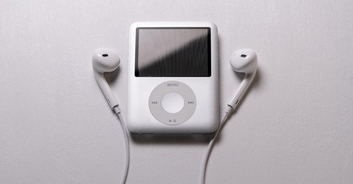We rarely discuss what we would like to happen to us when we die. The prevalence of skulls and bones in “alternative” culture proves what a taboo subject area this has traditionally been. However, while “death” and “diamonds” aren’t two words you would usually put together, there is a glamorous new way to live forever.
The popularity of cremation has grown massively, especially in the US. So - like lattes - people are looking for ways to spice them up a bit. A number of companies are therefore offering to compress your loved one's ashes into a navy blue diamond.
Humans are primarily made of oxygen (the living, breathing equivalent of Masterchef-style foam) which helps the next most abundant material in a corpse - carbon - combust. Diamonds are also made of carbon but require immense pressure over time to change their molecular structure.
This process can be recreated however - and forward-thinking funeral homes are now including this as an option. “We're bringing joy out of something that is, for a lot of people, a lot of pain,” says Christina Martoia of Algordanza US, who are leading the charge in the movement.
Based in Switzerland, Algordanza is active in 33 countries. Speaking to Business Insider, Martoia explains that at least a pound of cremains (not a typo) is required for the process to work: “That's kind of the magic number, where our engineers can guarantee there will be enough carbon to make a memorial diamond.”
In some cultures, high-temperature cremation is favoured however, to create a memorial diamond, a lower temperature is best as more ashes are left. Usually, five to ten pounds of ashes are left over but only a small proportion of this is carbon.
A special oven is used to determine if there is enough carbon. Should there not be enough, a lock of hair could be enough to tip it over. Then the process begins. “We use an acidic chemical to get rid of impurities,” Martoia explains.
Boron, an inert element which contributes to the miscellaneous one per cent of remaining gasses in the air, is what gives the gems their blue colour. It occurs in humans in a similarly small quantity (a fraction of a per cent) but because it has such a similar atomic weight to carbon, they are difficult to separate out. As such a bittersweet memento however, blue seems an apt colour.
“The diamonds can range from clear to very deep blue,” Martoia states. “The more boron, the deeper the blue.” That said, it can be difficult to accurately predict the colour and some aren't blue at all. However, they are all usually at least 99.9 per cent carbon by the end of the process. “An interesting thing to note,” Martoia adds, “is that our technicians are seeing a correlation in people who have had chemotherapy. Their diamonds tend to come out much lighter.”
They might not have the optimum cut, colour, carat or clarity, but these diamonds are more meaningful than any engagement ring could ever be. More importantly, recreating the conditions required to form a diamond is no mean feat.
Temperatures of 2,500 degrees Fahrenheit are required, which are applied to a "growing cell". The cell, which contains an existing tiny diamond to help the carbon form a diamond-like shape, is also subjected to 870,000 pounds of pressure per square inch (that's two and a half houses bearing down on an area smaller no larger than a credit card).
However, if you’ve hastily persuaded a loved one to sign the relevant paperwork enabling you to legally turn them into a diamond, there’s a good chance they just won’t die. Rather than restlessly wait around for your diamond mother to kick the bucket, you can rest assured that the same option is available for pets. Furthermore, considering that dogs are man’s best friend and diamonds are a girl’s best friend, the deceased dog diamond makes for a perfect gender-neutral gift in these modern, enlightened times.
Of course, there are also alternatives out there for aspiring immortals. While we would first need to work out how to resurrect dead people then cure the condition that killed them, this leading expert believes that cryogenic freezing is by far the best option (if you can afford the hefty price tag).
However, providing your family with some extra inheritance and a set of instructions to spread your ashes in various locations also seems pretty cool. In this writer’s opinion, the best option is to be portioned into thirds. The majority can be cremated so that your family can spread your ashes in meaningful places around the world, all while they admire their shiny, new family heirloom. The remaining third can then be buried in a small coffin (cost saving) so that they can gather, grieve and get to work cleaning that headstone. Happy Halloween!












